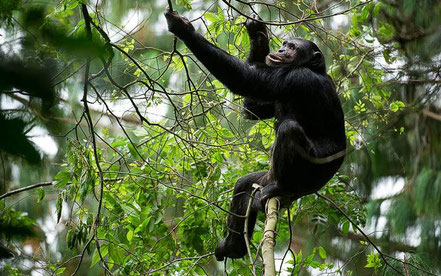WHERE CAN I SEE CHIMPS IN RWANDA IN 2024/2025

Nyungwe Forest National Park covers approximately 1600 to 2000 square kilometers and is the largest mountain forest protected area in Africa, harboring chimpanzee tracking as the most approved tourist activity carried out in Rwanda in the Cyamudongo Forest area. Click here to view mountain gorilla trekking safaris
Nyungwe Forest national park is estimated to have about 500 chimpanzees, with two large chimpanzee groups being habituated for tracking in Nyungwe Forest national park and the second group in the Cyamudongo Forest area located in the eastern area of Nyungwe Forest national park. view our most recommended chimpanzee trekking safari
Nyungwe forest national park chimpanzee groups under habituation, with the largest number containing about 60 chimpanzees, and the other group in the Cyamudongo has a small number of about 30 chimpanzees. Nyungwe Forest National Park offers the most triumphant and distinguished experiences, though sometimes it is very hard to see chimpanzees because the forest has rugged terrain.
Nyungwe Forest National Park’s chimpanzee tracking starts in three major reception centers: Uwinka, the main center; Kitabi; and Gisakura, where all tourists meet park ranger guides. Tourists are expected to arrive at any of these locations by 4:30 a.m., so that they can be driven to the starting point of the trek by 5:00 a.m.
According to research, Nyungwe Forest National Park only allows tourists to spend one hour with these chimps while getting close to nature, learning how chimps go about their lives, and discovering the behaviors that make chimps contain 99% of the original DNA of humans.
when is the best time to go chimpanzee trekking in Rwanda in 2024/2025
Chimpanzee trekking in Rwanda is best done during the dry season, which is regarded as the peak season and starts in the months of June to September and again in December, January, and February because during the dry months there is little or no rainfall in different national parks, therefore chimpanzee hiking trails are dry.
